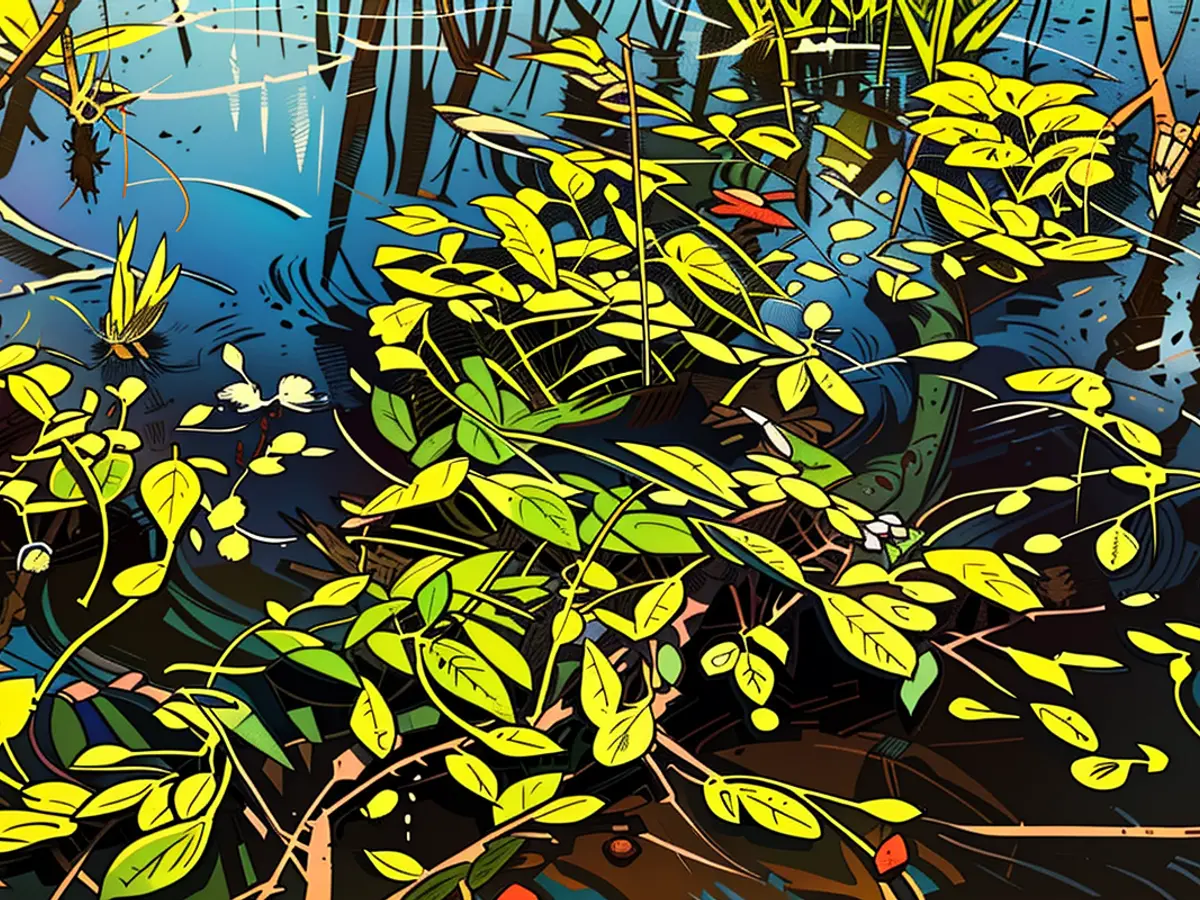- Initial amongst them was the German report detailing conditions in the Baltic Sea.
A wetland conservation project has led to an unexpected discovery of a scarcely seen plant species in Schleswig-Holstein. The water starwort (Limosella aquatica) has resurfaced in the Rickelsbüller Koog, as reported by the Nature Conservation Foundation. "This is quite a botanical surprise," stated project leader Oliver Granke. This unassuming native plant is at risk in the northernmost state and is listed on the Red List.
This year, the water starwort was spotted in large numbers in the Rickelsbüller Koog. "It might be the only occurrence in the entire state of Schleswig-Holstein this year," shared Granke.
The water starwort prospers in areas with water level fluctuations and the dynamic interplay of water and grazing animals, leading to nearly barren landscapes. It favors muddy locations beside rivers, lakes, or ponds as well as shallow flooded channels.
Reviving from a lengthy dormancy
Granke speculates that a certain action taken by the wetland bird project might have played a part in the water starwort's resurgence in the Koog, which borders Denmark. Last summer, he and his team restored shallow channels, known as "groups," using a specialized plow, reviving an area that had been filled in over the decades.
During this winter, the shallow channels were filled with precipitation, creating suitable conditions for wetland birds like the bittern in the spring. It appears that a dormant seed bank of water starwort, buried approximately 30 centimeters beneath the surface for decades, had been revitalized. The removal of the top layer exposed the seeds, bringing them to the surface and stirring them from their long-term hibernation, thanks to the improved conditions.
The main objective of the project centers around the protection of the demanding bittern
Granke underscores the significance of conservation efforts for a demanding species like the bittern (Limosa limosa), nicknamed "Greta" on the west coast. "If the bittern is flourishing, many other rare species will be safeguarded under its protection," he said.
The "Life-Limosa" project, titled "Where's Greta?" aimed to identify the preferred habitats of the bittern and other wetland and grassland birds from 2012 to 2023. This year, an unprecedented 39 breeding pairs of bitterns were counted in the Koog.
Other vegetables could be planted in the revitalized shallow channels to diversify the ecosystem, potentially attracting more wildlife. The water starwort's resurgence has also shown the importance of preserving such wetland habitats, as they can harbor dormant seed banks of various plant species.








